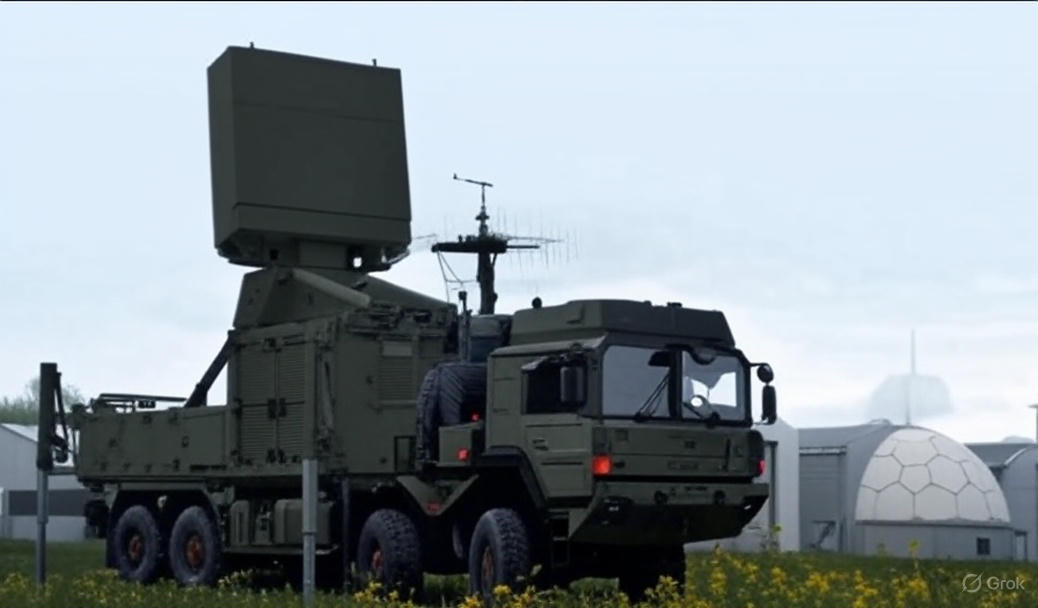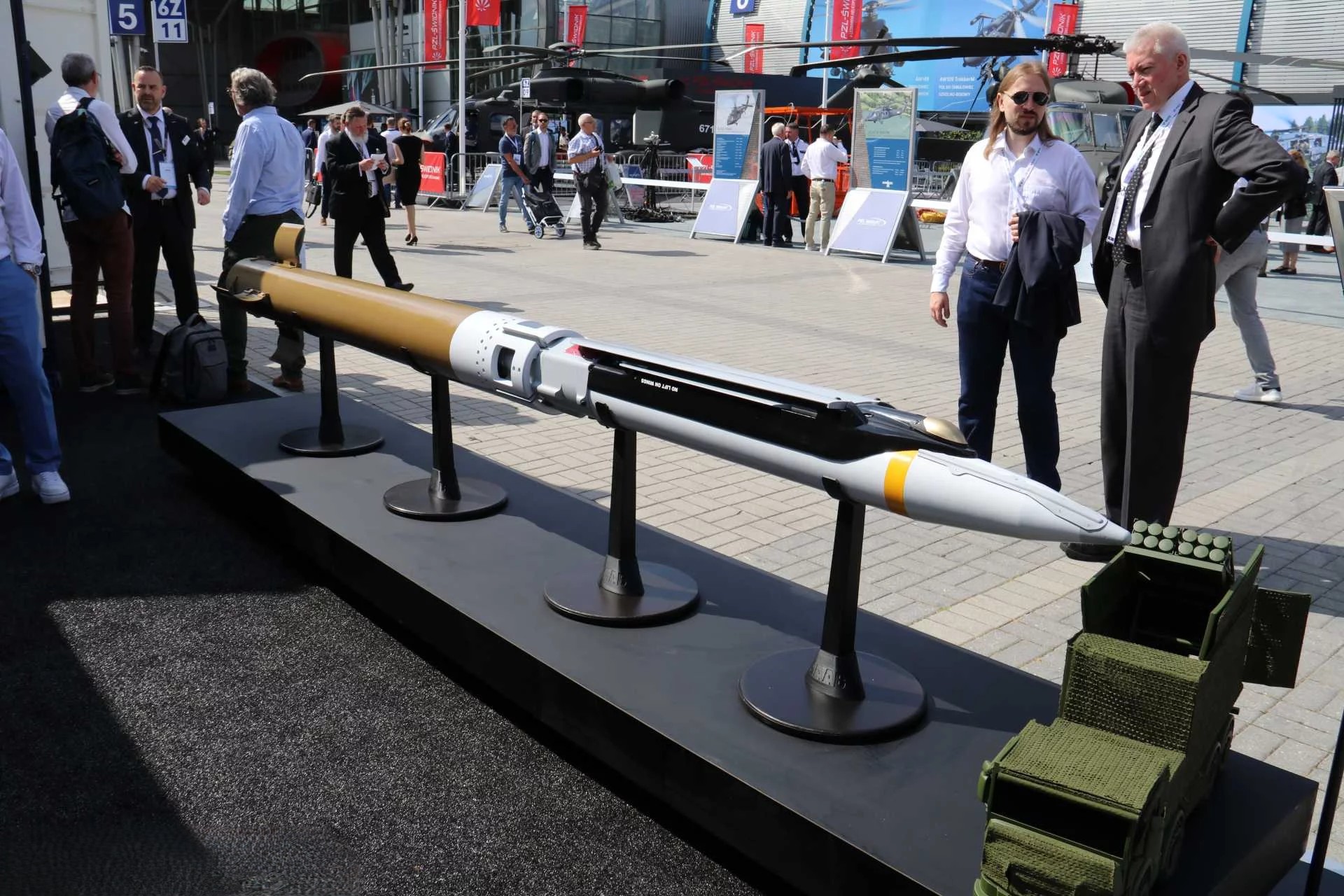In a dramatic escalation of support for Ukraine’s defense against relentless aerial threats, German defense titan Hensoldt has clinched a monumental deal to supply an undisclosed number of state-of-the-art TRML-4D and Spexer 2000 3D MkIII radars. Announced with a flourish in a press release on July 24, 2025, this €340 million (approximately $398.4 million) package is set to fortify Ukraine’s air defenses amid the ongoing conflict with Russia. This strategic move, spearheaded by Hensoldt’s cutting-edge technology, promises to transform the battlefield skies, offering a robust shield against a barrage of drones, missiles, and aircraft. With tensions soaring and the need for advanced surveillance never greater, this deal marks a pivotal chapter in Ukraine’s fight for sovereignty.
A Lifeline in the Skies: The TRML-4D Radar Revolution
At the heart of this defense upgrade lies the TRML-4D, a C-band (4–8 GHz) or NATO G-band active electronically scanned array (AESA) radar, purpose-built for ground-based air defense (GBAD). This technological marvel boasts an impressive capability to detect and track up to 1,500 targets simultaneously within a staggering 250-kilometer radius and at altitudes reaching 30 kilometers. Its sophisticated system can swiftly classify a diverse array of aerial threats, including cruise missiles, unmanned aircraft systems (UASs), fighter jets, and helicopters, providing Ukraine’s Armed Forces (AFU) with unparalleled situational awareness.
The TRML-4D’s track record in Ukraine is already noteworthy. As reported earlier, six units were delivered in May 2024, bolstering the AFU’s defenses. This follows a series of deployments starting in 2022, when four radars were initially supplied for Ukraine’s GBAD systems. In 2023, the support intensified with eight standalone TRML-4D radars and an additional four integrated into Diehl Defence’s IRIS-T surface-launched medium-range (SLM) air-defense systems. Each delivery has been a critical step in enhancing Ukraine’s ability to counter the sophisticated aerial assaults that have defined the conflict, making the latest batch a vital reinforcement.
Spexer 2000 3D MkIII: The Versatile Guardian
Complementing the TRML-4D is the Spexer 2000 3D MkIII, an X-band radar engineered to tackle ground, sea, and low-flying air targets, including UASs, unmanned surface vehicles (USVs), and missiles. With the ability to track over 300 targets within a 120° sector, this radar brings a new layer of versatility to Ukraine’s defense network. Its precision and adaptability make it an ideal companion to the TRML-4D, ensuring comprehensive coverage across multiple domains.
Hensoldt has integrated the Spexer 2000 into Rheinmetall’s innovative Skyranger 30 cannon-based air-defense vehicle, a cornerstone of the German Army and Luftwaffe’s Nah- und Nächstbereichsschutz (NNbS) short- and very short-range air defense initiative. Launched in January 2024, the NNbS contract was awarded to a collaborative Arbeitsgemeinschaft (ARGE) comprising Rheinmetall Electronics, Diehl Defence, and Hensoldt Sensors. This partnership not only strengthens Ukraine’s defenses but also aligns with Germany’s commitment to NATO’s eastern flank, weaving a tapestry of technological and strategic cooperation.
A Strategic Boost Amidst Conflict
The timing of this deal couldn’t be more critical. Since Russia’s invasion escalated in 2022, Ukraine has faced a relentless onslaught of drones and missiles, testing the resilience of its air defenses. The TRML-4D and Spexer 2000 radars, with their advanced detection and tracking capabilities, are poised to turn the tide. The TRML-4D’s ability to monitor vast swathes of airspace and the Spexer 2000’s focus on low-flying threats address the dual challenge of high-altitude incursions and swarm attacks, a tactic increasingly employed by Russian forces.
This €340 million investment reflects a broader international effort to support Ukraine. Germany, a key player in this alliance, has consistently provided military aid, and Hensoldt’s latest contribution builds on previous deliveries, including the 2022 and 2023 radar shipments. The undisclosed number of radars in this package suggests a significant scaling up, potentially doubling or tripling existing deployments, though exact figures remain under wraps pending further negotiations.
Economic and Technological Ripple Effects
Beyond the battlefield, this deal carries substantial economic weight. The €340 million contract injects vitality into Hensoldt’s production lines, sustaining jobs and fostering innovation in Germany’s defense sector. For Ukraine, the inclusion of these radars offers a chance to localize maintenance and training, boosting its domestic defense industry. The collaboration with Rheinmetall and Diehl Defence also hints at potential technology transfers, a move that could enhance Ukraine’s long-term self-reliance.
The Skyranger 30 platform, enhanced by the Spexer 2000, exemplifies this synergy. Designed to counter low-altitude threats, it integrates seamlessly with the IRIS-T SLM systems already in use, creating a layered defense network. This interoperability is a strategic asset, ensuring that Ukraine’s forces can adapt to evolving threats with minimal disruption.
Challenges and the Path Forward
While the deal is a triumph, challenges loom. The integration of these advanced systems into Ukraine’s existing infrastructure requires extensive training and logistical support, a process complicated by the ongoing war. Supply chain disruptions and the need for rapid deployment add further pressure. Moreover, Russia’s potential development of countermeasures, such as stealth technology or electronic jamming, could test the radars’ effectiveness, necessitating continuous upgrades.
Delivery timelines remain unspecified, but given Hensoldt’s history of swift action—delivering radars within months of previous orders—the first units could arrive by late 2025 or early 2026. This aligns with Ukraine’s urgent need to reinforce its defenses as the conflict enters its fourth year, with no end in sight.
A Beacon of Hope for Ukraine and NATO
This radar package is more than a military transaction; it’s a symbol of solidarity. For Ukraine, it’s a lifeline that enhances its ability to protect civilians and infrastructure from aerial bombardment. For NATO, it strengthens the alliance’s eastern defenses, sending a clear message to Moscow. As Hensoldt CEO Oliver Dörre might argue, these radars are “guardians of peace,” vital for safeguarding lives amid chaos.
As negotiations progress and the radars take their place on Ukraine’s front lines, the world watches with bated breath. Will this technological infusion turn the tide of the war, or will it spur an arms race in the region? One thing is certain: the skies over Ukraine are about to get a lot smarter—and a lot safer.
Stay tuned as Hensoldt’s radar revolution unfolds, reshaping the future of aerial defense!




